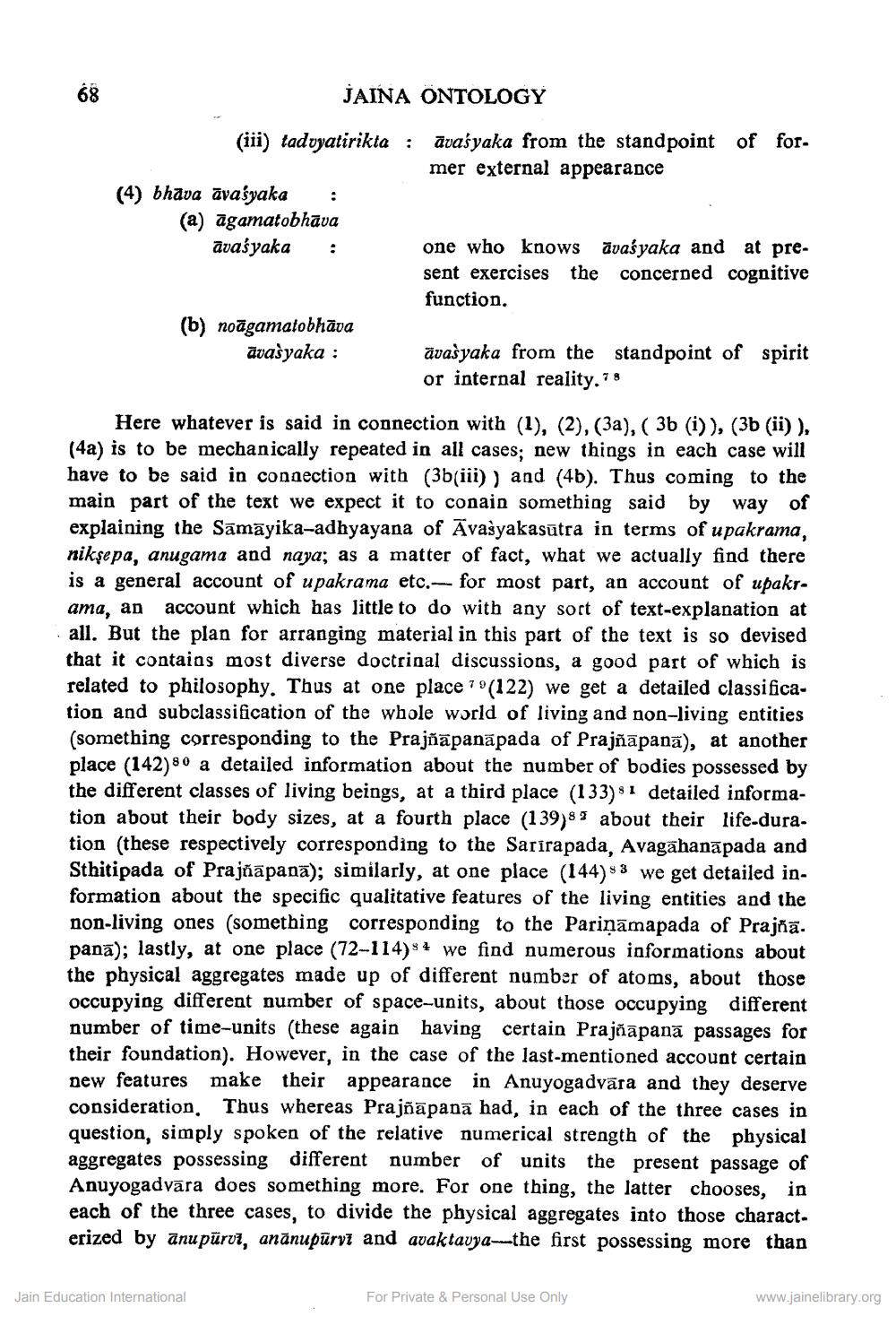________________
68
(4) bhāva avasyaka (a) agamatobhāva avaśyaka
(iii) tadvyatirikta :
JAINA ONTOLOGY
:
Jain Education International
(b) noāgamatobhāva avasyaka:
avasyaka from the standpoint of former external appearance
one who knows avaśyaka and at present exercises the concerned cognitive function.
avasyaka from the standpoint of spirit or internal reality.78
8
Here whatever is said in connection with (1), (2), (3a), ( 3b (i)), (3b (ii) ), (4a) is to be mechanically repeated in all cases; new things in each case will have to be said in connection with (3b(iii)) and (4b). Thus coming to the main part of the text we expect it to conain something said by way of explaining the Sāmāyika-adhyayana of Avasyakasutra in terms of upakrama, nikşepa, anugama and naya; as a matter of fact, what we actually find there is a general account of upakrama etc.- for most part, an account of upakrama, an account which has little to do with any sort of text-explanation at all. But the plan for arranging material in this part of the text is so devised that it contains most diverse doctrinal discussions, a good part of which is related to philosophy. Thus at one place 79(122) we get a detailed classification and subclassification of the whole world of living and non-living entities (something corresponding to the Prajñāpanāpada of Prajñāpanā), at another place (142) 80 a detailed information about the number of bodies possessed by the different classes of living beings, at a third place (133) 1 detailed information about their body sizes, at a fourth place (139)8 about their life-duration (these respectively corresponding to the Sarirapada, Avagāhanāpada and Sthitipada of Prajñāpanā); similarly, at one place (144) we get detailed information about the specific qualitative features of the living entities and the non-living ones (something corresponding to the Parinamapada of Prajñā. pana); lastly, at one place (72-114) we find numerous informations about the physical aggregates made up of different number of atoms, about those occupying different number of space-units, about those occupying different number of time-units (these again having certain Prajñāpanā passages for their foundation). However, in the case of the last-mentioned account certain new features make their appearance in Anuyogadvara and they deserve consideration. Thus whereas Prajñāpana had, in each of the three cases in question, simply spoken of the relative numerical strength of the physical aggregates possessing different number of units the present passage of Anuyogadvara does something more. For one thing, the latter chooses, in each of the three cases, to divide the physical aggregates into those characterized by anupürvi, anānupūrvt and avaktavya-the first possessing more than
For Private & Personal Use Only
www.jainelibrary.org




